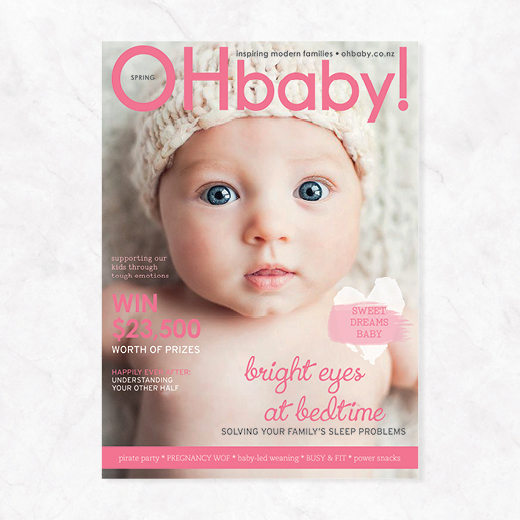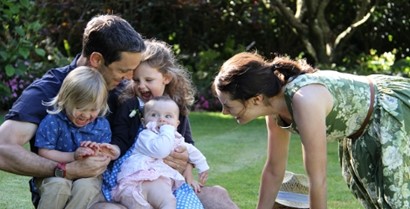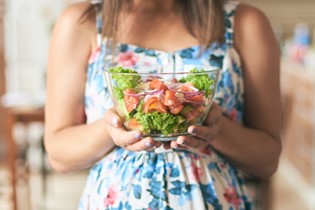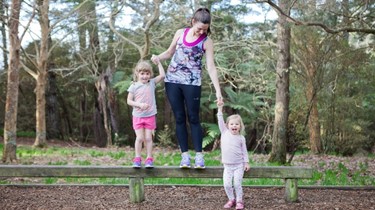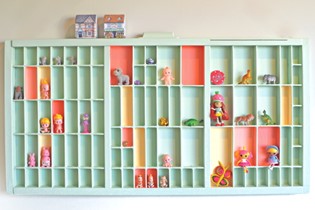Why baby-lead weaning is so controversial
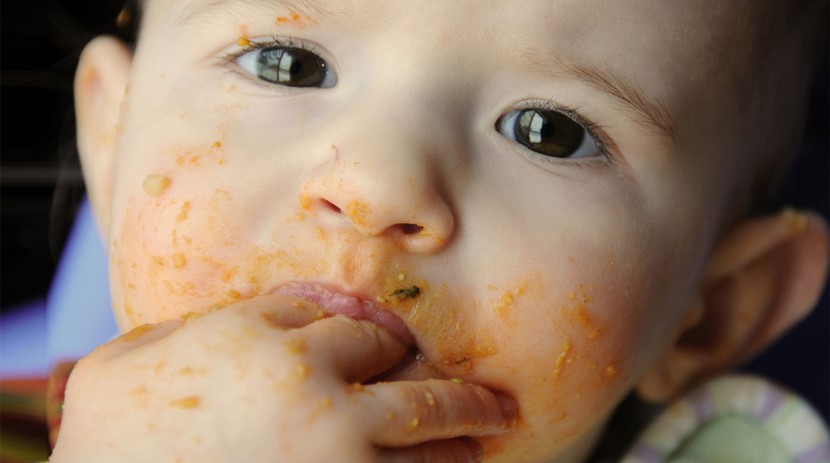
Tiffany Brown investigates “baby-lead weaning” and asks why some parents and experts are seemingly at odds over its benefits.
Starting solids is a milestone many parents approach with trepidation, anticipating battle scenes that must be stoically withstood until some magical time in the future when their child finally manages to get most of the food in their mouth and not on the floor.
Baby-lead weaning (BLW) is based on the idea that spoon-feeding is an unnecessary step in the introduction of solids. The idea is to allow babies to use their own instincts in an exploration of first foods and self-directed weaning off breast milk or formula, avoiding the “purée stage” completely.
The term was first coined by Gill Rapley, a British public health nurse and parent who became interested in the topic of self-feeding among babies. That interest lead to research, which in turn lead to a website, media and public speaking, followed by collaboration with freelance writer Tracey Murkett. The pair have since produced a number of books on the subject.
Baby-lead weaning promises a revolution, asserting that instinctive child-led exploration of solid food leads to confident, happy eaters who participate in family mealtimes with a minimum of stress or fuss. And the internet is awash with parents attesting to the fact.
So how does it work? Gill Rapley and Tracey Murkett’s suggestions are surprisingly simple. They recommend delaying the introduction of solids till at least six months, the continuation of breast or formula feeding while solid food is introduced, and a strategy of including baby into family mealtimes – offering the same food (albeit modified slightly to suit) and, importantly, at the same time.
The New Zealand Ministry of Health currently does not recommend BLW, citing three main concerns. Firstly it questions whether babies can get sufficient iron in their diet with a BLW approach. By comparison, spoon-fed babies are advised to begin with iron-fortified rice cereal to compensate for the inability of breast milk to provide adequate levels of iron after six months of age. Secondly the MOH is concerned about infants choking on solid foods without progressing through the runny-smooth-lumpy stages currently recommended. Lastly there is a question over whether BLW babies may be less likely to grow well (“failure to thrive”).
The MOH requires more evidence as to the risks and benefits of BLW before it revises its recommendation not to employ this approach to introduce your baby to solid food. But are experts right to be so reluctant? Is the cautious approach always best?
Only a generation ago, doctors regularly advised women to give up breastfeeding in favour of replacement or additional formula and early introduction of complementary food by spoon-feeding. Rapley and Murkett give a succinct historical account in their book Baby-Led Weaning: The Essential Guide to Introducing Solid Foods and Helping Your Baby to Grow Up a Happy and Confident Eater. Until around 1900, babies were breastfed exclusively to about eight or nine months by either their own mother or a wet nurse. As wet-nursing became less popular, many babies with mothers who could not or chose not to breastfeed turned to commercially prepared or homemade animal-milk based formulas to feed their babies. At the same time medical doctors began to exert more influence with mothers, and recommended strict time-tabling for feedings. This time-tabling interfered with the now-known “more feeding, more milk production” nature of human breastfeeding, and as a result many babies failed to thrive.
Because chubbiness was also seen as a sign of good health in infants, the medical profession started recommending solid foods at around three or four months. However, the current thinking is that exclusive breast-feeding for the first six months of life is best for baby. And Rapley and Murkett argue that because their recommendations are based on delaying the introduction of solids till six months, BLW aligns with that up-to-date evidence.
A potential benefit of a baby-led approach to feeding currently being studied is prevention of obesity, which is a growing concern for governments and health agencies worldwide. In New Zealand one in every four adults is obese. There is a theory that BLW may help reduce obesity, because BLW children are less likely to overeat if they choose their own food.
Dutch immigrant Anne Fowler arrived in New Zealand pregnant with her first child in 1960. She went on to have four more children over the next decade. Within the first two to three months of each baby’s life, her maternity doctor advised that her breast milk was “not sufficient” for her babies’ requirements. Dutifully she began to supplement with formula and also began to spoon-feed them from about three or four months of age. Now middle-aged, three of her children have elected to have lap-band surgery after a lifetime of tremendous struggle to manage their weight. “I don’t know if it was right or not,” says Anne, “but that’s what the doctor said, so that’s what I did.”
In 2012 Otago University’s Department of Human Nutrition reviewed the currently available research into BLW. It noted the opposing views of parents using the method in contrast with healthcare professionals. The concerns mirror those of the MOH, but the authors note these opinions come from professionals with very little direct experience with BLW, as opposed to parents who have used the strategy and who now wholeheartedly recommend the approach to other parents.
Auckland mum Alice Fenster is one such parent. Alice began offering solid food using the BLW approach to her baby girl Ellie on her six-month birthday. The strategy has had its ups and downs, but Alice says she wouldn’t do anything differently now.
“We were very confident about the approach at the start,” she says, “but nothing prepared us for the anxiety we felt every time Ellie explored a new food. She had to learn about chewing, moving food around in her mouth, and swallowing in her own time, and there was plenty of gagging and coughing involved until she developed those skills.
“It was tough at times to sit by and let it happen, but we are really pleased we persevered. Now Ellie manages all sorts of foods well compared to her playgroup pals. Their parents have already had months of stress with purées and mashes. I don’t envy them the road ahead. I feel like we’ve done a great thing to encourage Ellie to have a really positive relationship with food.”
Research to date aligns with Alice’s experience, showing that many BLW parents initially struggle with the risk of choking but over time this becomes manageable. The Otago researchers found 30% of parents in one study said they experienced one or more episodes of choking, but went on to note that in all cases the infant dealt with the problem themselves and did not need first aid intervention.
Experts also raise iron deficiency as a potential problem, but there is a lack of evidence about nutritional levels amongst spoon-fed versus BLW babies. It is speculated BLW babies may be at increased risk by missing out on iron-fortified baby cereal – the recommended “first food” for spoon-feeders. But by the same token, because BLW babies join in family mealtimes they are more likely to enjoy the iron benefits of foods like egg yolk, liver and cooked meat.
Anecdotally, BLW experts and parents speak of the intuitive nature of the exploration of first foods by babies, often describing the specific way infants select food to try from the variety offered. In some cases, babies who are unwell exclusively choose proteins in preference to other food groups. Others describe babies ignoring certain foods they later turn out to be allergic to. Rapley and Murkett believe that babies’ own instincts can guide them to select and consume the appropriate foods necessary to make up any nutrient shortfalls – including their reduced intake of iron from breast milk after the age of six months.
So is baby-lead weaning right for you and your family? Alice Fenster says it was during pregnancy that she learnt to parent by trusting her instincts. “For us it’s been completely natural to be selective about the advice we receive from our midwife, GP, Plunket and others. Some of it works for us, some of it doesn’t.
“We chose not to parent Ellie in a way that forced her into our routine,” she emphasises, “so the idea of spoon-feeding her – of completely removing the control from her – didn’t sit well with us. That’s how we discovered BLW, and it’s been an awesome thing for our family.”
In this information age it is often the case that we look to the past and come full circle. Perhaps in time extended breastfeeding, delayed introduction of food and allowing infants to progress at their own pace will again, much like the situation at the turn of last century, be the norm for modern families, and stories of “mealtime battlegrounds” will become simply the stuff of legend.
TOP FIVE TIPS FOR GETTING STARTED WITH BABY-LEAD WEANING
Tiffany Brown is an Auckland-based freelance writer with a special interest in traditional nutrition for both children and adults. She and her husband manage a sun-tanning business and a deeply curious 18-month-old daughter. She also blogs about life, food and parenting at zigzagutopia.wordpress.com.

AS FEATURED IN ISSUE 27 OF OHbaby! MAGAZINE. CHECK OUT OTHER ARTICLES IN THIS ISSUE BELOW
